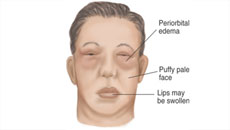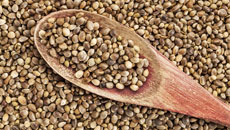Do you weigh more then you should, if yes, you are like the two thirds of American adults who are overweight. During the past 20 years obesity has gone up significantly. Data from NLS in Canada suggests that the prevalence of overweight has increased from 45% to 57% in men, 30% to 37 % in women, 11% to 33% in boys and 13% to 27% in girls. The problems seem to be more pronounced in the children.
We are living in the time of overweight/ obese epidemic. It is a complex disorder of diet regulation and metabolism controlled by specific biological factors. Besides appearance, obesity has many more important concerns; annually there are more then 300,000 deaths related to obesity.
Obesity predisposes ones towards greater risk of developing: -
• Coronary Artery Disease. Build up of the fatty deposits in arteries, narrows the path of blood flow to the heart that may cause angina (pain) and complete obstruction causes heart attack.
• High Blood Pressure.
• Endocrine. Polycystic ovarian syndrome, menstrual disorders, infertility, diabetes (excess fat makes your body resistant to
insulin which is not good for our health).
• Neurological Problems. Headache, carpel tunnel syndrome (medial nerve of the wrist is compressed causing feeling of numbness, tingling) stroke, dementia.
• Gastrointestinal Disease. Gastrointestinal reflux disease, fatty liver, hernia, colorectal cancer, Gall bladder Disease.
• Osteoarthritis. Lower back pain, immobility, hyperuricemia (increase in uric acid that may predispose to gout).
• Respiratory. Sleep apnea (sleep disorder characterized by pauses during the sleep and snores heavily) usually these kinds of people are with large neck and narrow airways (all combined are called obesity hypoventilation syndrome), Asthma.
• Some Cancers. Breast, uterus, cervix, gall bladder, colon, rectum and prostate.
• Fatty liver Diseases. Fatty accumulation can cause scarring, inflammation and may cause cirrhosis of liver ultimately.
• Lymphedema and Cellulites.
• Psychological problems. Depression and low self-esteem

In the clinical setting obesity is evaluated by measuring BMI (Body Mass Index, weight of a person scaled according to height) and waist circumference and evaluating prevalence of the risk factors and comorbidities. BMI of 25 to 29 is overweight and BMI over 30 is obese. Why the epidemic? Is it because of too much food and less exercise or our modern stressful fast food life style? When food energy consumption exceeds the energy expenditure, fat cells throughout our body intake energy and store it in the form of fat. Fat is important for storing energy and insulating our body besides other functions.
Our body can handle some extra fat but beyond a certain point it can interfere with our health.
Factors that contribute to the development of obesity that include: -
• Illness. Hypothyroidism, excess production of the hormones from adrenal glands, Poly-cystic ovary syndrome, conditions
such as arthritis reduces movement and causes weight gain.
• Medications. Anti psychotics, tricyclic anti depressants, corticosteroids, antihypertensive (medications to lower blood
pressure).
• Psychological factors. Stress, anxiety.
• Age. There is reduced activity with increase in age, this can cause weight gain. There is decrease in the muscle mass in the body leads to decreased metabolism. Due to this there is reduced calorie need. If that adjustment is not made to your diet, there is tendency to gain weight.
• Habits or Behaviour. Eating disorders, Inactivity, Insufficient sleep
•Weight cycling caused by repeated attempts to loose weight
• Genetics predisposition Prader-Willi syndrome (it is a genetic disorder in which seven genes in chromosome 15 is missing) and leptin receptor mutations
• Other Environmental factors
• Diet High glycemic diet, soft drinks and high calorie food habits.
• Life style
• Alcohol Drinking adds calories to your diet. One beer contains 150 calories.
•Smoking cessation. Smokers tend to gain weight after quitting. Their metabolic rates are high due to nicotine. Past smokers tend to eat more and gain weight. But there is more health risk involved in smoking then weight gain.
• Pregnancy. Some women tend to gain weight during pregnancy and find it hard to lose it after delivery. Do you need medical advice?
• Evaluate your BMI index. If it is from 25-29 you are overweight; but if your BMI is over 30 seek medical advice. The doctor will review your general physical health and could help to overcome any underlying causes.
• Waist circumference. Abdominal fat may increase the risk of various diseases. If there is a lot of abdominal fat seek medial advice. The waist size for Men is 40 inches and for women 35 inches.
Treatment
The cure for obesity is energy-limited diet and increased exercise. Studies have proved that diet and exercise programs have produced average weight loss of 8% of total body mass. Losing 5% of the body weight will have profound benefits on your health. The main problem is maintaining
that body weight. 80-85% of the people will regain their body weight within 2-5 years.
The American College of Physicians recommends five clinical practice guidelines:
1) People with BMI above 30 should consult dietician, exercise and other behavioural interventions, set your realistic goals for weight loss.
2) If the goals are not achieved, pharmacotherapy can be offered. The patient needs to be informed the possibility of side effects.
3) Drug therapy may consist of sibutamine, orlistat, fluoxetine and bupropin.
4) BMI more then 40 who fail to achieve weight loss, surgery may be considered.
5) The bariatic surgery should be done at place and surgeons who do it more often.
Dietary Changes
Crash diet is not recommended because they can cut so much calories and nutrients, which can lead to other health problems. You can follow these fundamentals to healthy eating:
• Select healthy food. Vegetables, fruits, fish, beans, grains. All these foods providegood nutrition and promote good health.
•Select good carbohydrate. Dieticians believe that 40-60% of calories should come from the carbohydrates. Avoid carbohydrates like sugar, sweeteners, and limit fruit juice. Try and eat plenty of high complex fibrous carbohydrate like grain, brown rice, oatmeal etc.




